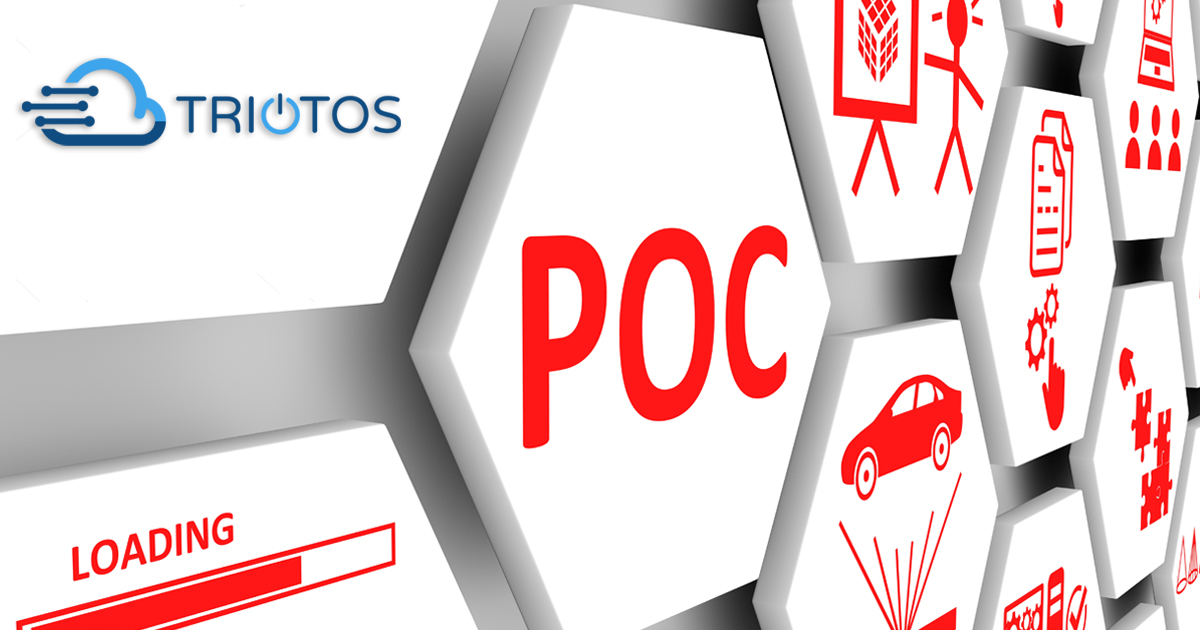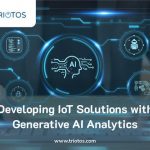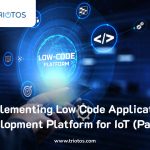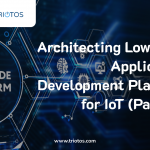
The value of Proof of Concepts (PoCs) in IoT cannot be underestimated. Done right, the IoT POC shows that an IoT solution both feasible and what it actually looks like. A PoC will also show what an IoT solution can deliver to various parts and stakeholders of a business and help drive decision making towards business alignment. A well designed PoC paves the way for successful development, integration and implementation across all business functions and touch points whether they are customers, distributors, service departments or manufacturing, marketing, and sales. Finally, a well-developed and realistic PoC that can be migrated to production scale and quality is invaluable during product/solution development and initial customer trials and interactions.
What constitutes a PoC in IoT?
IoT solutions by default are made up of many moving parts. The 4 main ones are:
- The Things themselves – Devices or Systems
- Connectivity between Thing and IoT Platform via ‘Internet’
- IoT Platform for Data Handling, Processing, Storage & Management
- Applications (web and mobile) associated with IoT Solutions
The simplest version of a PoC is to get these pieces to simply work together. This is often called a Tracer Bullet that shows IoT data sent from Thing all the way to Applications or vice versa. While helpful during development this simplest version does little to demonstrate what the complete IoT solution will look like or what it can do. What’s needed are PoCs that to the extent possible show and demonstrate the envisioned IoT business solution complete with meaningful applications (web, mobile, other), interactions with users, other data and systems, and data processing/analytics from which deeper operational, customer or business insights can be derived. Before embarking on a PoC it therefore makes sense to think through what value a PoC should deliver.
IoT PoC Value?
IoT Proof of Concepts have a chicken and egg problem: Thing or Applications? What is it that we want to see proven? By stretching the analogy to what we want to eat (breakfast eggs or chicken dinner or ……..) we should focus on what we expect the IoT we have in mind do for our business (sell more things, sell new things, create new business(es), provide better service, improve performance, service, or profitability, …………). This changes the PoC focus from ‘does it work’ to ‘what can it do’, from ‘tracer bullet’ (send data from device to one application) to showing that by connecting a deice/system to the Internet we can create a number of different valuable applications and derive multiple valuable insights. With this approach the focus changes from technology to business value creation and the goal of the PoC becomes showing and demonstrating what these values are or can be. Here are some examples:
- Increase Product Value: A mobile application associated with a new IoT version of an existing product improves usability and provides the user with information in an easy to use format showing settings, performance and history. This creates a more valuable product that can be sold at a higher price.
- Optimize System Usage: By associating system use with environmental information gathered from public APIs, the user can optimize usage of the system and compare it to other systems and even users in user groups. This provides a leading-edge product more competitive in bidding situations.
- Refine Product Attributes: By analyzing operational data using sophisticated analytics methods a lack of critical data can be identified during PoC and incorporated in the productized version by adding a sensor or device processing algorithms. These additions can provide powerful new product attributes.
- Simplify Designs: Tracking detailed user and usage information can help identify meaningless use cases resulting in a cost reduction in the connected product. It was collecting too much meaningless data.
- Define New Uses: In addition to planned IoT features the PoC can be used to provide service organizations with operational and failure data. This PoC data can be used to introduce remote service capabilities that were not originally planned.
The examples above show that if the focus of an IoT PoC shifts from technology testing (does it work) to identifying the different business values that can be provided by the solution, the PoC can help drive refinements and development of additional applications not initially thought of. High PoC value shows what the IoT solution can do for the overall business and user experience, not only that it works.
Creating a Valuable IoT PoC
Creating an IoT PoC therefore starts by addressing a set of questions beyond simple functions, focusing on what the solution can do for the business. A good start is to ask these questions:
- What business opportunities and/or problems are we trying to address with the IoT PoC?
- How can the IoT PoC demonstrate that these business problems and/or opportunities are addressed.
- Which IoT based business applications do we therefore like to demonstrate?
- Which business functions will be affected by the IoT solution and should therefore be involved in the PoC planning?
- How do we want to use the PoC? Demonstration, Testing, Development Platform …..?
Once these questions have been answered the next step is to develop an IoT PoC plan with clearly stated goals and deliverables as well as a description of how these will be met and milestones for deliverables. In order to anchor the PoC with different stakeholders it makes sense to assign implementation responsibilities and create a steering committee that meets to review milestones.
While these activities occur the actual implementation planning should be under way. As mentioned above this need to focus on all four parts of the IoT solution: Thing, Connectivity, IoT platform and Applications.
Implementing the Valuable IoT PoC
Depending on the desired IoT solution the primary focus may be on a company IoT Thing (device/system) or on Applications or on both as these tend to be the tangible and visible parts. During a PoC, connectivity may be viewed as less important but the ability to deploy and scale a solution is critically dependent on this and PoC value is decreased dramatically if connectivity is not addressed. IoT Platform often turns out to be the most challenging decision. Why do we need an IoT Platform? Can’t we just create a mobile app and connect it to the device? The answer to these questions is NO! All you have done is connected a Thing to a mobile application without addressing the value that a real IoT solution can offer. The right IoT PoC platform will provide you with a way to process and store data. It will also host web applications and provide APIs to mobile applications and interface with external data. Finally, it will operate as the technology foundation for your IoT business.
Once these decisions about Thing, Connectivity, IoT Platform and Applications have been made it is time to budget and staff the effort. Done right, the IoT PoC will be able to demonstrate the business value by providing all stakeholders tangible evidence that shows the opportunities and address their needs.
At Triotos we work with customers though all phases of their IoT implementation journey using the AWS IoTcore cloud computing platform around which we have created a rapid onboarding solution that can deliver IoT solutions in months instead of years and for <$100k instead of $ millions. To support IoT PoCs we offer the Triotos-POC platform that allows customers to create PoCs that come with a complete set of applications using simulators to create a virtual version of the IoT Thing. To find out more, see Triotos-PoC Platform on our web site.







